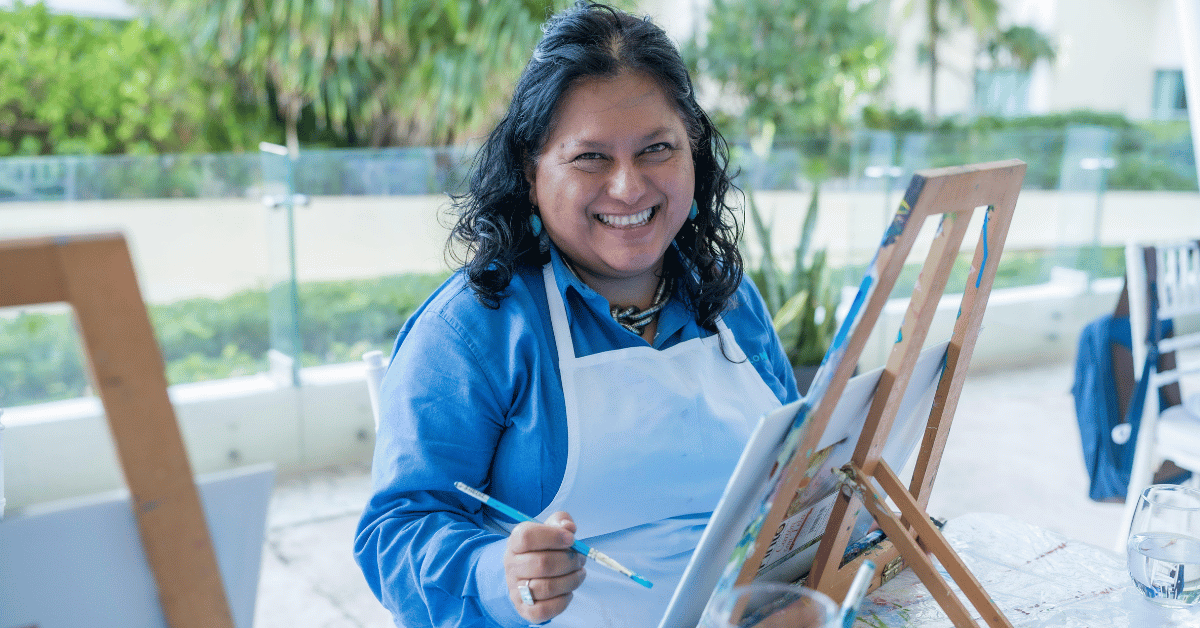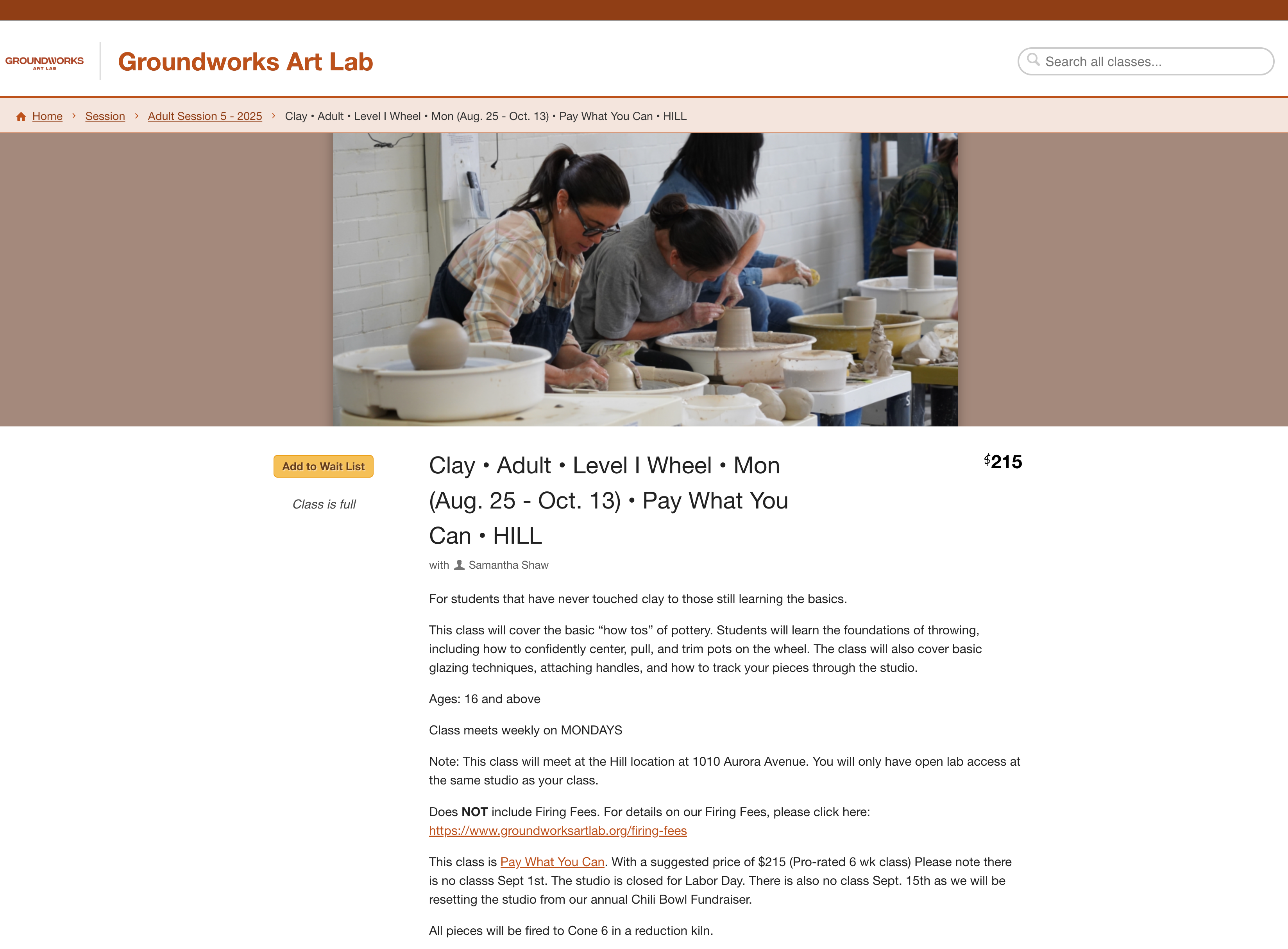4 Ways to Show Your Community Your Classes Are Made for Them



Folks in your community have a lot of options when it comes to choosing an art class or summer camp. In addition to local businesses, non-profits, and other programs like yours, they can choose from a seemingly unlimited array of online courses. But most learners don’t want generic offerings. They want classes and camps that fit with their preferences, passions and ways of life. Your education program can stand out by showing students and parents that your offerings are tailor-made for them.
This starts with designing courses and camps with specific types of learners in mind, but success takes more than curriculum planning. Well-crafted descriptions, compelling imagery and thoughtful marketing messages can show your community that your offerings are exactly what they’ve been looking for. And that kind of resonance drive signups and long-term loyalty.
#1: Offer the classes locals want
The majority of your participants are likely to live nearby. That means asking for input from local families and community members is a smart way to make sure you’re offering the experiences they want. Student and parent feedback forms are a good place to start. Include a question that asks about other classes and camps folks would like your program to offer.
Although your current participants are a rich source of information, don’t stop there. For many programs, up to 65% of students are first-time registrants. That means there’s a majority out there you may not hear from if you only focus on existing students.
Reaching these potential learners takes a little extra work, but it’s worth it. Broadening your sample in this way helps your program to meet the needs of a wide range of community members. It also helps you avoid getting stuck in an echo chamber.
- For theatres and performing arts organizations: Send a survey to your patrons asking what classes and camps they would like to see
- Post a poll on social media asking people to vote for their favorite of several possible topics; if you're summer camp planning, ask parents what they're kids are into!
- Reach out to local businesses or clubs and ask for their input
Even if you don’t get a ton of feedback from the public, you can still find ways to fit your arts classes to your community. Seasonality, local industry trends, and regional culture are all smart places to start.
Population Spotlight: Attracting younger audiences
If your organization, like many others, wants to engage younger audiences and build "audiences and customers of the future", classes and camps are a great place to start. Here are a few tips:
- Include tech-enriched experiences where possible. Show students how they can use technology to make art, draft designs, or collect photos for inspiration. Smart phones can be tools rather than distractions.
- Provide opportunities to build community and meet other young people in a structured environment that removes some of the pressure of new social interactions.
- Lean in to creativity. Many young people are eager for the chance to explore new mediums, formats, and ways to make meaning.
Using casual language, incorporating technology, and linking your offerings to online trends helps younger students see that your classes have been designed for them. Once they’re in the door as learners, they’re more likely to engage with other offerings, from performances to exhibitions.
Pro tip: Don't forget about parents and guardians when you're crafting course and camp descriptions. You want your offering to appeal to the student, yes, but it's also prudent to add details that may appeal to parents (more on how to do that below). Subtle queues such as waivers, custom forms that ask for health info, and student testimonials can also go a long way in assuring parents their kids will be well care for. It's all about effectively speaking to both audiences!
#2: Write course descriptions that draw the connection
The best way to show your community you’ve heard their feedback is to offer the classes they’ve requested. The way you write course descriptions can help too. Using language like “often-requested class” or "community favorite” draws a connection between the feedback you’re getting and the classes you’re offering.
The images you include with your course description can further illustrate that your classes are made for the people you serve. Wherever possible, use photos of real students and instructors. Featuring local people in your course listing creates a point of resonance with students who see people who look like them or even people they know!

#3: Communicate impact, not just subject matter
In descriptions and marketing messages, be sure to highlight what participants will gain by taking a course or attending a camp. This goes beyond a list of skills to convey how the class will change or enrich the student’s life.
Many students are looking for more than skill development, they want a valuable experience.
Many learners are looking for more than skill development, they want a valuable experience. Highlighting aspects like meeting new people, lifelong learning, or improved wellbeing can help students envision themselves in your classes. And they can help parents envision their kids growing with your organization. Specific, tangible, and unique course impacts let people know your offerings are the right fit for them and their family.
Your course and camp descriptions can also tell students and parents exactly who the offering is for. You might use language like:
- “Calling all aspiring actors in grades 2 through 6…”
- “Designed for intermediate artists who want to bring their brushwork to the next level.”
- “A fun and inspiring class for adults excited to learn more about Expressionism”
Such specific language sends a signal to your ideal student that they’ve found the right class for them. It also helps registrants easily identify any age or skill-level requirements that might affect their ability to fully experience the class.
#4: Build marketing messages and events around local people
Beyond course descriptions, your other marketing can also highlight local connections and community focus. From social media to email marketing to your website, consider how to build messages that feature local people, groups, and businesses.
- Share student testimonials. Testimonials build trust and let potential students hear from learners just like them. The mix of testimonials you share says something about the type of people who enjoy your programs. Testimonials from people who are well-known in the region may be particularly valuable because they are essentially real-life micro influencers.
- Highlight community partners and events. If you’ve partnered with local businesses, clubs, groups, or other organizations, highlight those partnerships through special emails and social media posts. When families see your partnership with an organization they trust, some of that trust may transfer to your program as well.
- Plan a student showcase. A yearly or seasonal event that features the work of your students can bring their friends and family to your programs. The promise of inclusion in such a showcase may attract students who seek an opportunity to share their work with a wider audience.

Ultimately, education programs thrive when they offer classes and camps to fit student and parent needs and communicate that fit well. When your offerings, descriptions, and marketing are in alignment, your ideal learner can’t help but be attracted to your program.
At CourseStorm, we offer impossibly simple technology to support your education program, from registration to student communication to automated marketing that keeps your classes top-of-mind. Connect with our team today to learn more!
Save time and grow your impact with CourseStorm










